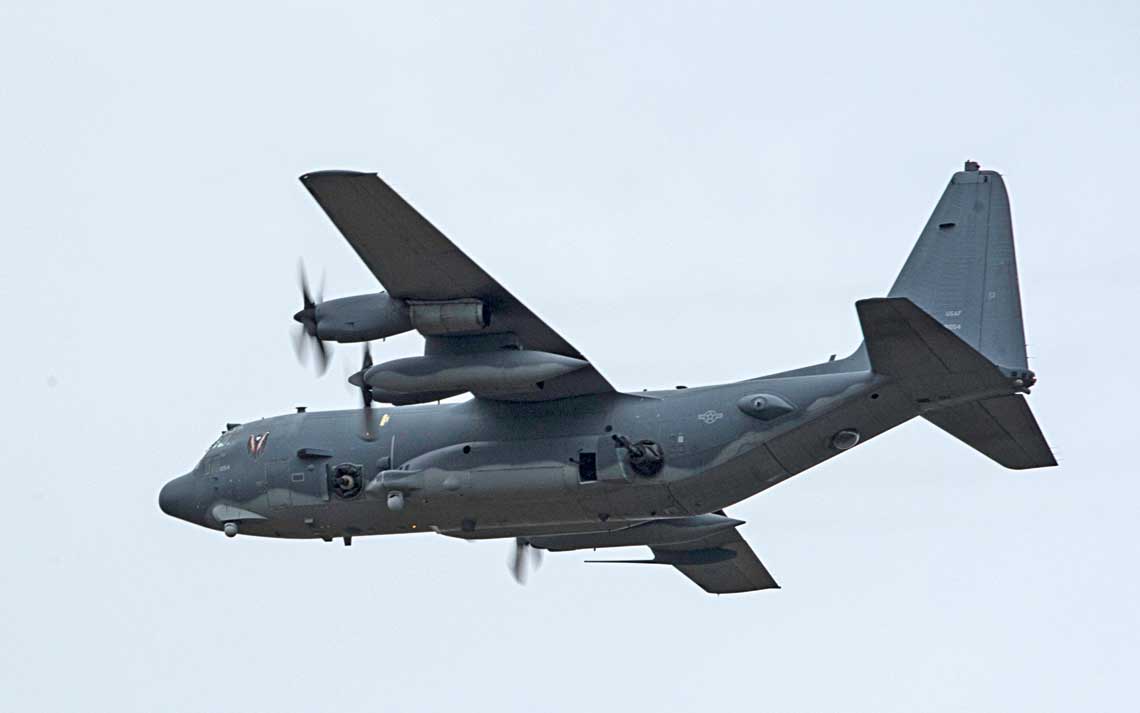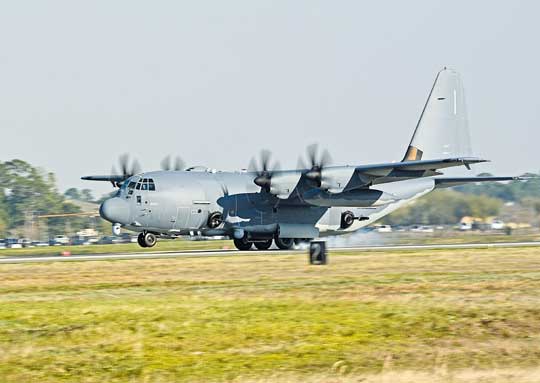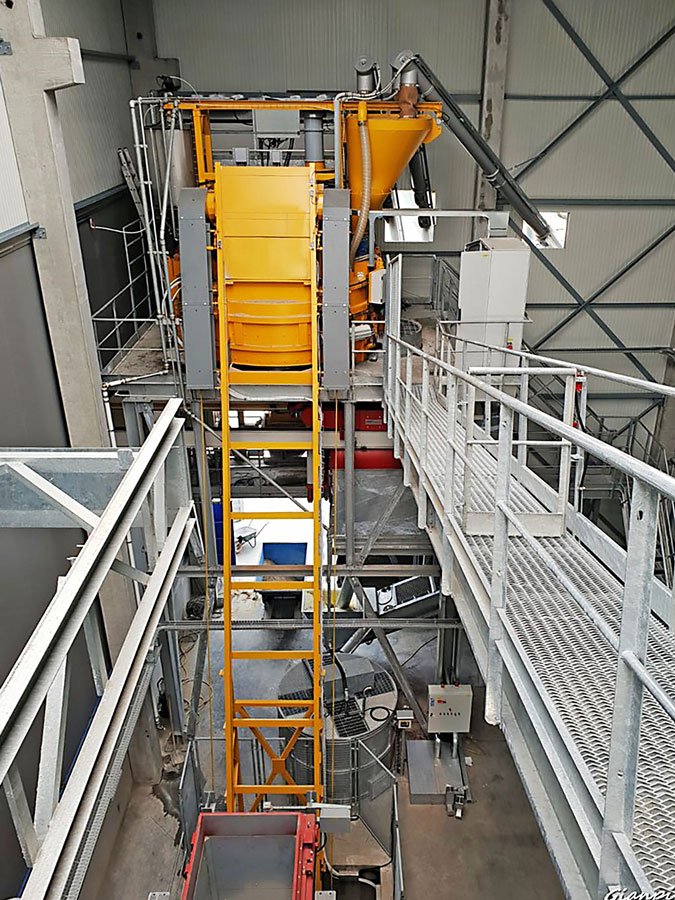
AC-130J Ghost Rider

The US Air Force currently has 13 operational AC-130J Block 20/20+ aircraft, which will be in service next year for the first time.
The middle of March of this year brought new information about the development of the AC-130J Ghostrider fire support aircraft by Lockheed Martin, which constitute a new generation of vehicles of this class in service with American combat aviation. Its first versions were not popular with users. For this reason, work began on the Block 30 variant, the first copy of which was sent in March to the 4th Special Operations Squadron stationed at Hurlbert Field in Florida.
The first warships based on the Lockheed C-130 Hercules transport aircraft were built in 1967, when US troops participated in the fighting in Vietnam. At that time, 18 C-130As were converted to close fire support aircraft, redesignated AC-130A, and ended their careers in 1991. The development of the basic design meant that in 1970 work on its second generation was started on base S-130E. The increase in payload was used to accommodate heavier artillery weapons, including the M105 102mm howitzer. In total, 130 aircraft were rebuilt into the AC-11E variant, and in the second half of the 70s they were converted into the AC-130N variant. The difference was due to the use of more powerful T56-A-15 engines with a power of 3315 kW / 4508 hp. In subsequent years, the capabilities of the machines were again increased, this time due to the possibility of in-flight refueling using a hard link, and the electronic equipment was also upgraded. Over time, new fire control computers, an optical-electronic observation and aiming head, a satellite navigation system, new means of communication, electronic warfare and self-defense appeared on warships. AC-130H took an active part in the fighting in various parts of the globe. They were baptized over Vietnam, and later their combat route included, among other things, the wars in the Persian Gulf and Iraq, the conflict in the Balkans, the fighting in Liberia and Somalia, and finally the war in Afghanistan. During the service, three vehicles were lost, and the withdrawal of the remaining ones from combat began in 2014.

The first AC-130J Block 30 after the transfer of the US Air Force, the car is waiting for about a year of operational tests, which should show an improvement in capabilities and reliability compared to older versions.
Road to AC-130J
In the second half of the 80s, the Americans began replacing old warships with new ones. First the AC-130A was withdrawn, then the AC-130U. These are vehicles rebuilt from S-130N transport vehicles, and their deliveries began in 1990. Compared to the AC-130N, their electronic equipment has been upgraded. Two observation posts were added and ceramic armor was installed at key locations in the structure. As part of the increased self-defense capabilities, each aircraft received an increased number of AN / ALE-47 visible target launchers (with 300 dipoles to disrupt radar stations and 180 flares to disable infrared homing missile heads), which interacted with the AN directional infrared jamming system / AAQ-24 DIRCM (Directional Infrared Countermeasure) and anti-aircraft missile warning devices AN / AAR-44 (later AN / AAR-47). In addition, AN / ALQ-172 and AN / ALQ-196 electronic warfare systems were installed to create interference and an AN / AAQ-117 surveillance head. Standard armament included a 25mm General Dynamics GAU-12/U Equalizer propulsion cannon (replacing the 20mm pair of M61 Vulcans removed from the AC-130H), a 40mm Bofors L/60 cannon, and a 105mm M102 cannon. howitzer. Fire control was provided by the AN / AAQ-117 optoelectronic head and the AN / APQ-180 radar station. The aircraft entered service in the first half of the 90s, their combat activity began with the support of international forces in the Balkans, and then participated in the hostilities in Iraq and Afghanistan.
The fighting in Afghanistan and Iraq already in the 130st century led to the creation of another version of the Hercules strike line. This need was caused, on the one hand, by technical progress, and on the other hand, by the accelerated wear of old modifications during hostilities, as well as by operational needs. As a result, the USMC and USAF purchased modular fire support packages for the KC-130J Hercules (Harvest Hawk program) and MC-130W Dragon Spear (Precision Strike Package program) - the latter later renamed the AC-30W Stinger II. Both of them made it possible to quickly re-equip transport vehicles that are used to support ground forces with guided air-to-ground missiles and 23 mm GAU-44 / A cannons (an air version of the Mk105 Bushmaster II propulsion unit) and 102 mm M130 howitzers (for AC- 130W). At the same time, the operating experience turned out to be so fruitful that it became the basis for the construction and development of the heroes of this article, i.e. subsequent versions of the AC-XNUMXJ Ghostrider.
Nadlatuje AC-130J Ghost Rider
The AC-130J Ghostrider program is the result of operational needs and generational change in US aircraft. New machines were needed to replace worn-out AC-130N and AC-130U aircraft, as well as to maintain the potential of the KS-130J and AC-130W. From the very beginning, the cost reduction (and so high, amounting to about $120 million per instance, according to 2013 data) was assumed due to the use of the MC-130J Commando II version as the base machine. As a result, the aircraft had a factory reinforced airframe design and immediately received some additional equipment (including optical-electronic observation and guidance heads). The prototype was supplied by the manufacturer and rebuilt at Eglin Air Force Base in Florida. Other vehicles are being converted at Lockheed Martin's Crestview plant in the same condition. It took a year to finalize the AC-130J prototype, and in the case of serial installations, this period is supposed to be limited to nine months.

